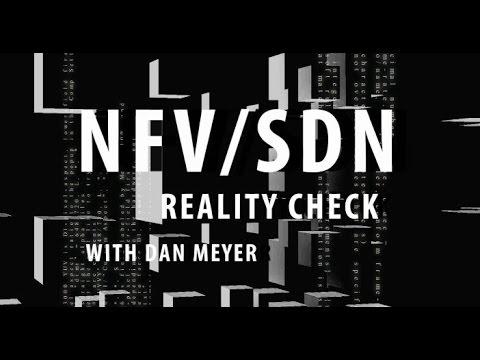Evolving Storage Needs For Cloud Infrastructure – NFV/SDN Reality Check Episode 57
Description
Verizon this week claimed it recently completed the industry’s largest known network functions virtualization OpenStack cloud deployment across five of its U.S. data centers. The telecom giant said the deployment created a “production design based on a core and pod architecture that provides the hyperscale capabilities and flexibility necessary to meet the company’s complex network requirements.”
Verizon said deployments are currently in progress across additional domestic data centers and aggregation sites; that it plans for international location deployments over the next several months; and expects design adoption in edge network sites by the end of the year.
The deployment included support from Big Switch Networks, Dell and Red Hat, with claims the OpenStack pod-based design moving from concept to deployment of more than 50 racks in the five data centers in less than nine months. The partners were said to have constructed and tested large scale test beds mirroring the production design to validate resiliency at scale, and leveraged the open source community to deliver the NFV pod architecture.
A recent report from Technology Business Research found some early adopter telecom operators were moving forward with limited commercial launches of NFV and software-defined networking technologies despite continuing questions around standards.
The report noted these early launches were leveraging a mix of vendor solutions and internal resources ahead of industry adopted standards with cost reduction and service agility seen as key drivers for initial deployments. TBR noted for carriers like AT&T, NFV and SDN are viewed as “critical for long-term survival.”
In terms of integration models, TBR noted one approach is to build an end-to-end NFV stack leveraging products from several vendors. These deployments require “tested, interoperable components to ensure carrier-grade delivery, though adding further complexity, operators must decide which vendor, if any, integrates the stack.”
TBR highlighted NTT DoCoMo as one operator that is leverage multiple vendors for its deployment, though working as its prime integrator. This path is seen as somewhat limited to carriers with enough expertise in the matter to handle their own integration.
Other carriers are expected to use a single vendor for their full NFV stack, though TBR explained carriers should make sure such moves include solutions that comply with “multivendor and open source standards to enable network integration.”
For this week’s featured interview, we spoke with Ranga Rangachari, VP and GM for Storage at Red Hat, to get his view on the evolving storage needs for cloud infrastructure.
That will do it for this week’s show. Make sure to check us out again next week when we are scheduled to speak with the TM Forum on connecting NFV islands.
























